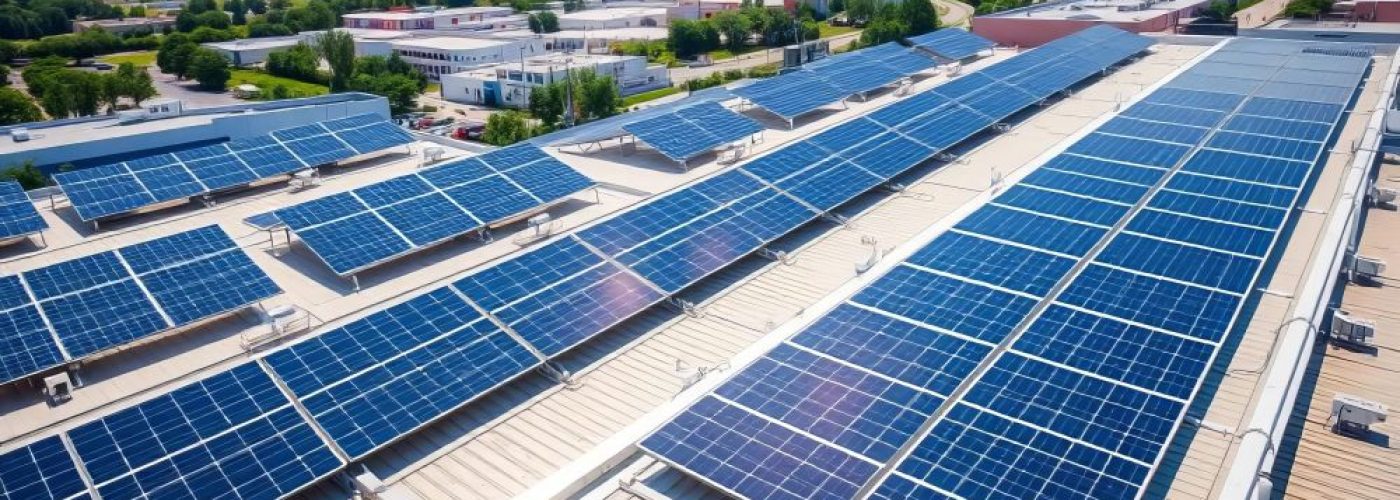Making the switch to solar power can be a smart move for industrial operations seeking to reduce energy costs and foster a more sustainable future. But installing panels is only the beginning. True efficiency comes from careful planning, smart system design, and consistent upkeep.
Many businesses invest in solar only to see underwhelming results because they overlook critical factors during implementation. Panel placement, system sizing, energy storage, and integration with existing infrastructure all determine whether your solar investment pays off in five years or fifteen.
In this article, you’ll learn how to implement industrial solar power for maximum efficiency and real financial returns. Read on!
Understand Your Energy Profile and Site Conditions
Before investing in a solar system, take a close look at how your facility uses energy. Track when and where your biggest power demands occur. This helps you size your system to match production schedules and minimize reliance on outside power. Analyzing your electricity bills and utility usage patterns can also reveal opportunities to shift loads and use solar energy more effectively.
Site conditions matter just as much. Factors such as available rooftop space, shading from nearby structures, and the direction your building faces can impact how much sunlight your panels capture. Conducting a professional site assessment through a trusted solar company can provide accurate data on solar potential, local weather patterns, and the best installation angles.
To find a reliable provider, look for one with proven experience in commercial solar projects and installing solar for industrial businesses. Check that they’re certified, transparent about costs, and willing to tailor solutions to your facility’s needs. A good provider should also handle everything from the initial site assessment and system design to solar installation and maintenance.
Optimize Installation and Connection to Existing Systems
Efficient solar installation starts with proper planning and coordination. Roof structures must be able to handle the added weight of a solar panel system, while ground-mounted arrays require stable soil and clear zoning approvals. Choosing certified installers familiar with industrial setups helps avoid costly delays and design errors.
Connecting your solar setup to your existing electric grid or internal power systems should be seamless. A well-planned connection enables your facility to utilise solar energy during peak hours and seamlessly switch to grid power when needed. Some commercial solar users also integrate battery backups to enhance energy independence. This provides them with greater control over when and how they draw power.
Choose a System With the Right Scale, Technology, and Layout
Once you know your energy usage, it’s time to select the right system. For large facilities, commercial solar systems can be designed to handle high energy demands, whether mounted on rooftops or the ground. The choice between these setups depends on the availability of land, building design, and long-term expansion goals.
Solar panel technology also plays a major role. High-efficiency panels may cost more initially, but they can generate more power in a limited space. Pairing them with modern inverters that support energy storage or battery storage systems can give you flexibility during cloudy days or high-demand hours.
If your business consumes a significant amount of energy, combining solar with utility-scale solar solutions or shared community solar programs can increase your total solar capacity and lower your carbon footprint. This approach can create a more reliable energy setup, reduce your dependence on the grid, and improve overall efficiency.
Monitor Performance and Maintain for Longevity

Once your solar power system is operational, consistent monitoring ensures it continues to perform efficiently. Software tools can track energy production in real time and alert you to any issues, such as a drop in panel output or inverter malfunctions. Regular cleaning and inspections prevent dirt and debris from reducing efficiency.
A well-maintained plan can also extend the life of your system. Checking connections, inspecting mounts, and reviewing energy data can reveal performance trends early. Partnering with your installer or solar company for scheduled servicing can help your equipment stay in top shape. This reduces downtime and unexpected repair costs.
Review Results, Adjust, and Plan for Growth
After installation, keep reviewing your solar performance. Compare actual energy generation to your projections to see if your solar power setup is meeting expectations. If output seems lower than planned, check for new shading, weather-related factors, or system wear that may be limiting production.
Businesses planning to expand can benefit from scalable systems that support future solar panel installation. Reviewing system data also helps identify when upgrades or additional panels could increase efficiency. Many companies explore solar tax credits and incentives that can offset installation or expansion expenses, making growth more affordable.
Conclusion
Implementing industrial solar power for maximum efficiency takes planning, precision, and long-term care. Start by understanding your energy usage, designing a system that suits your site, and maintaining it properly.
With a thoughtful approach, renewable energy can become a stable part of your business strategy, reducing utility bills and supporting your journey toward carbon neutrality. When done right, solar technology can bring your company closer to sustainable growth and genuine clean energy independence.





